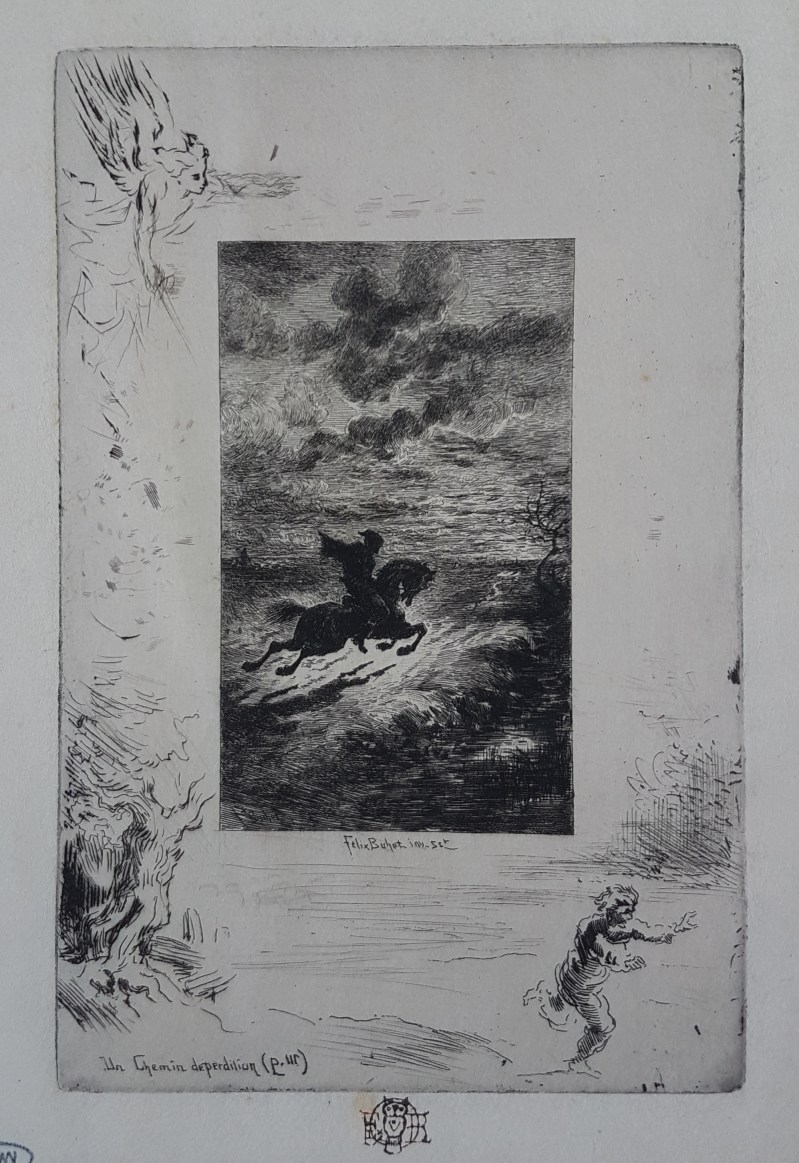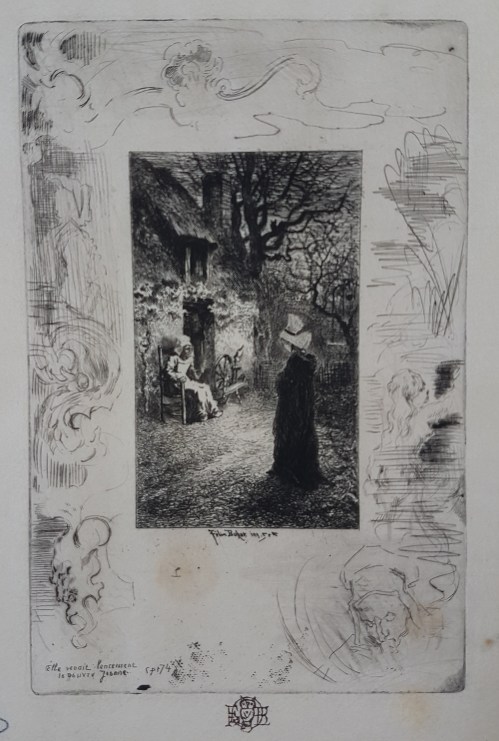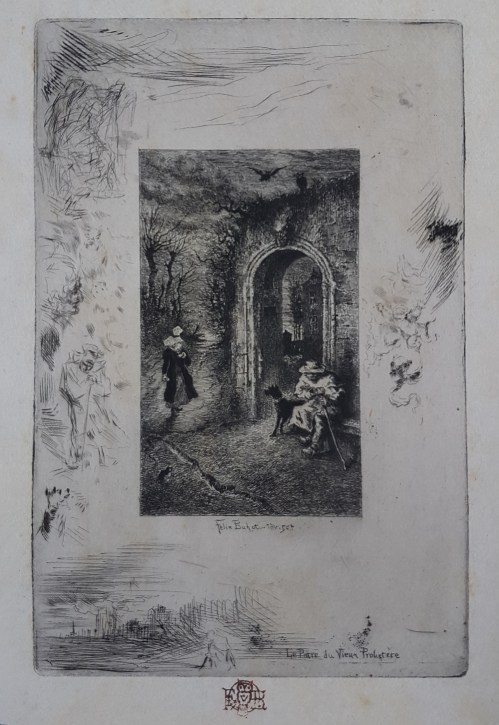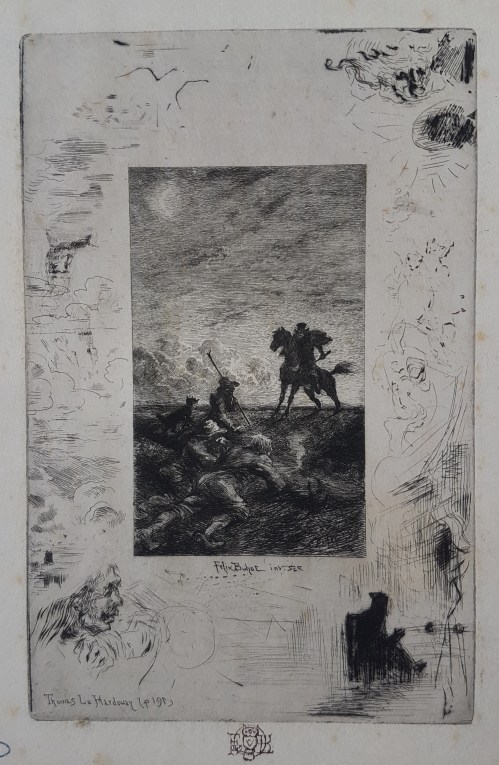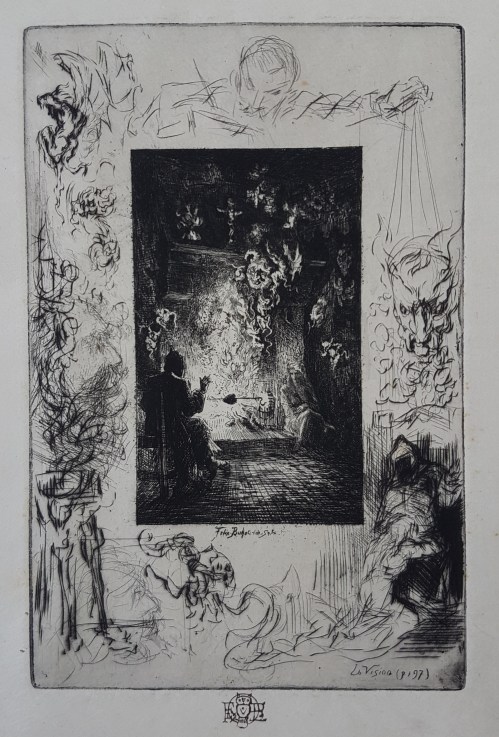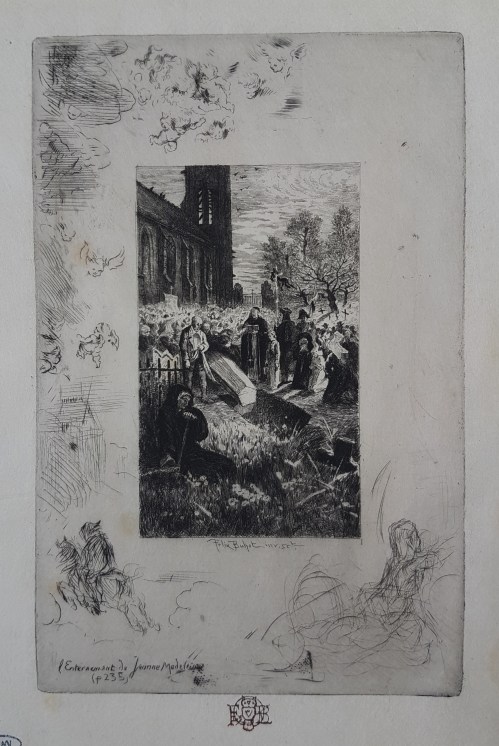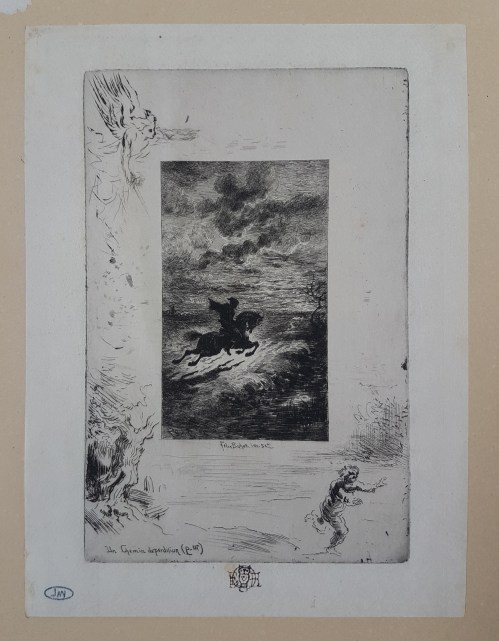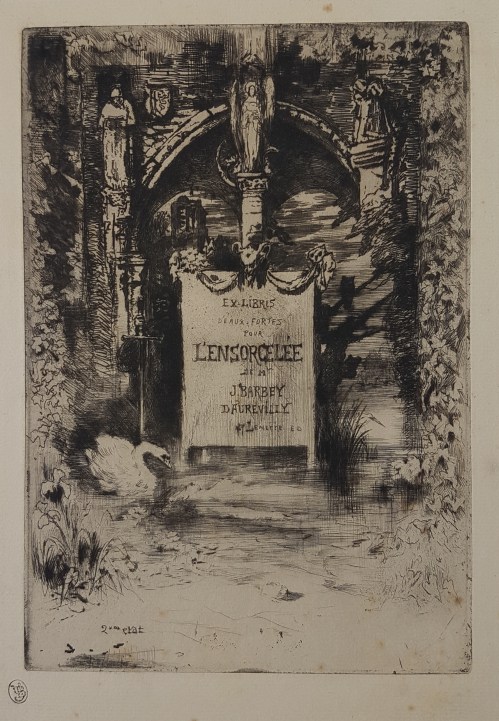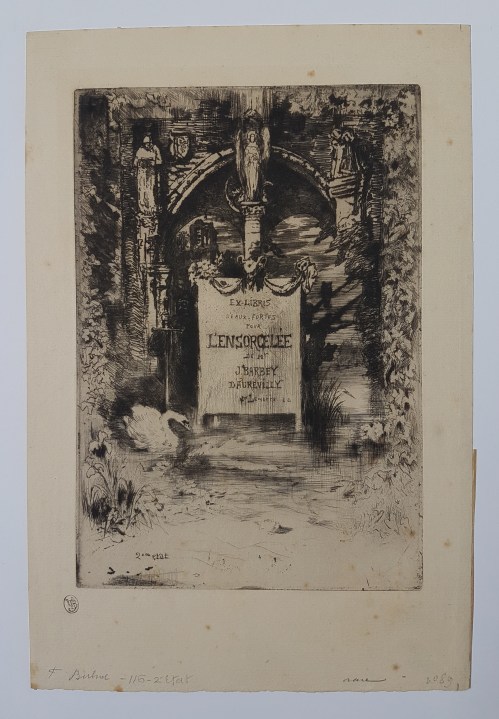Félix BUHOT: Illustrations for L’Ensorcelée by Barbey d’Aurevilly, 1873
SOLD
Etching and drypoint, each about 175 x 115 mm. Bourcard & Goodfriend 85 to 90 (B. & G. 85, 3rd state (of 6); B. & G. 86 to 90, 3rd state (of 5)).
Rare complete series of 6 plates, before erasing of the symphonics margins and before the plates were reduced. Edition of only 12 copies.
This series contains:
- Le Pâtre [The Shepherd]
- Un Chemin de perdition [A Road into iniquity]
- Elle venait lentement [She came slowly]
- Thomas Le Hardouay
- La Vision [The Apparition]
- L’Enterrement [The Funeral]
Superb impressions printed with surface tone on japan laid paper. Buhot’s stamp (Lugt 977). Collector stamp verso : Marcel Lecomte, french dealer and collector (Lugt undescribed).
Generally in very good condition. A few pale foxmarks. Full margins (sheets: each about 210 x 155 mm).
Together with: Ex-libris pour L’Ensorcelée, etching and tools, 220 x 152 mm. B. & G. 116, final state.
Very fine impression printed on laid paper ; collector stamp in the lower left corner of the sheet : Alfred Beurdeley (Lugt 421). In very good condition. A few foxmarks. Sheet: 290 x 195 mm.
L'Ensorcelée or La Messe de la Croix-Jugan [The Mass at Croix-Jugan] by novelist Jules Barbey d'Aurevilly was first serialised in 1852 then published in 1854. As Jean-Luc Dufresne points out, Buhot made the illustrations for L'Ensorcelée and Le Chevalier Destouches “spontaneously, and not because an order was placed”. Buhot met Barbey d'Aurevilly in 1872, and the writer introduced the artist to publisher Alphonse Lemerre. Barbey d'Aurevilly was a great admirer of Buhot's work; in the writer's words, Buhot “dreams with a head that is identical to mine”.
To Buhot, these prints were not just illustrations, but worked as an extension to the text. Regarding the publication of Manet's illustrations for the book Le Fleuve [The River] by Charles Cros in 1874, Buhot would say: “these sketches will gush out naturally from the text, as if from the pen of the writer, but modified by another creative genius.”
On this topic, J.-L. Dufresne mentions that Buhot used to write literary stories in his youth, and he would illustrate these stories with sketches. According to Dufresne, this habit resulted in the creation of symphonic margins: “Félix Buhot had well-developed literary tastes and the taste for writing prompted him to compose literary whimsies as he was still a teenager. He would illustrate these with sketches. In these illustrated literary attempts we can see the origin of the symphonic margin […]. » (Jean-Luc Dufresne, Valérie Sueur-Hermel, Alison McQueen, Félix Buhot, peintre graveur entre Romantisme et Impressionnisme, p. 112).



